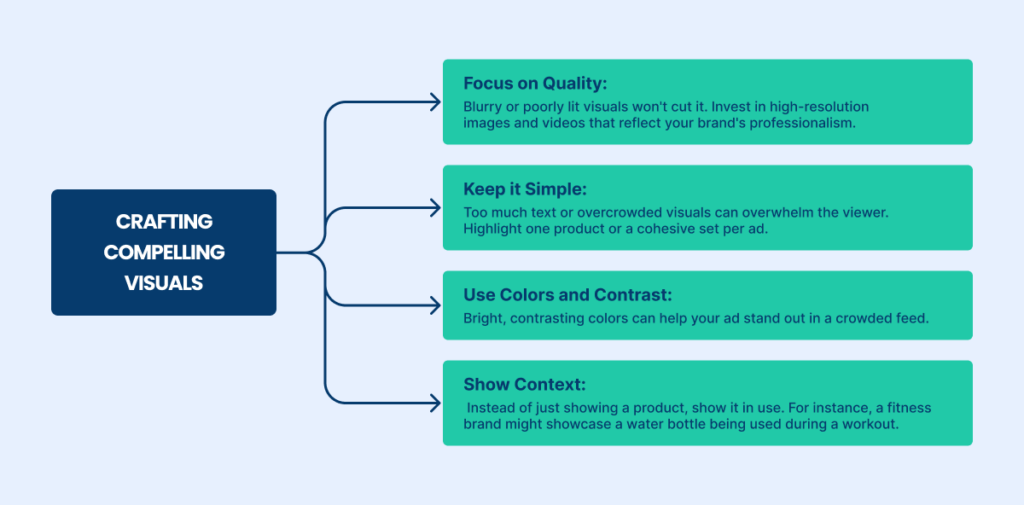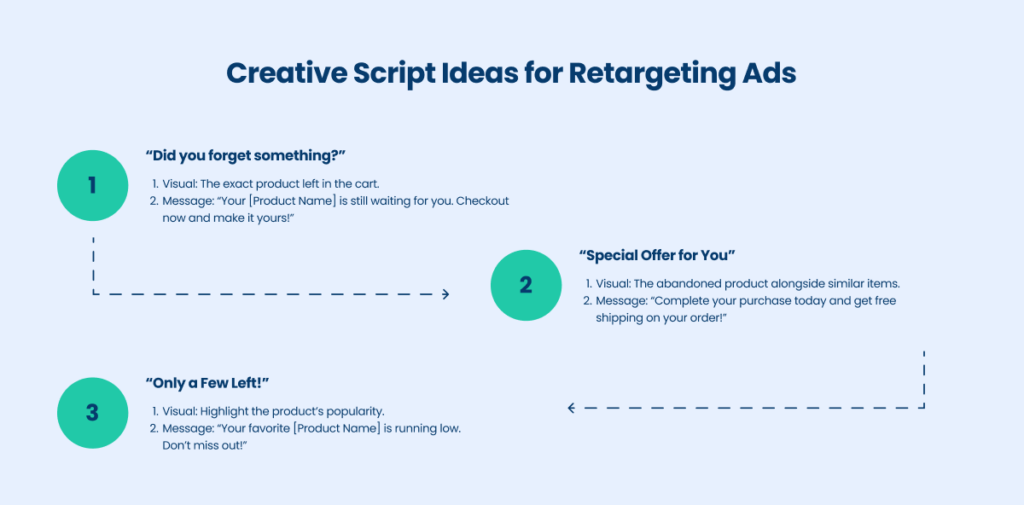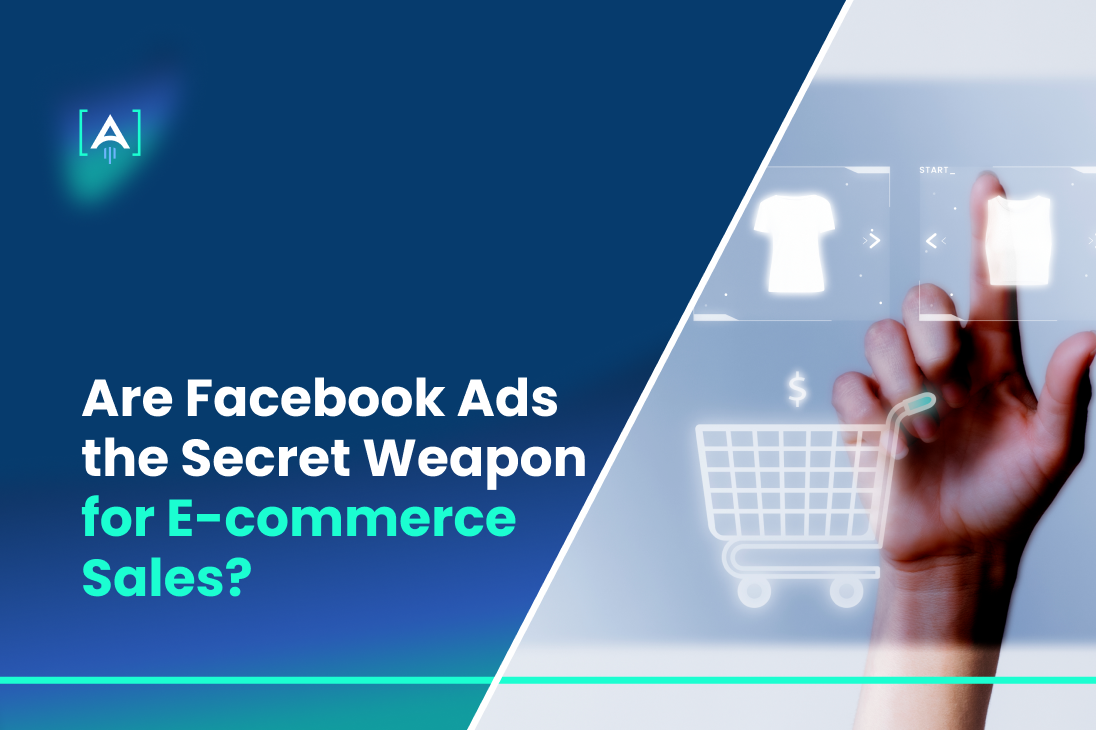In the world of e-commerce, standing out feels like a battle every single day.
You’re up against countless competitors, fighting for visibility, clicks, and, ultimately, sales. Add abandoned carts and striving attention spans to the mix, and it’s easy to feel like the odds are stacked against you.
Here are the Facebook Ads, the ultimate game-changer for e-commerce.
According to the given data, advertisers can target 2.24 billion users on Facebook in 2024, accounting for 41.3% of all internet users and 27.7% of the global population.
Source: Annual advertising revenue of Meta Platforms worldwide, Statista
With tools that let you target the right audience, re-engage customers who almost bought, and showcase your products like never before, Facebook Ads can turn challenges into opportunities. Indeed, E-Commerce Marketing Agency can amplify these efforts by crafting data-driven campaigns for your brand’s unique needs.
Let’s explore how Facebook Ads when leveraged effectively, can redefine success for your e-commerce business.
From Scroll to Sale: Why Visual Storytelling is Key in Facebook Ads
Visual storytelling is not just an optional addition to e-commerce Facebook ads. It’s the heart of driving engagement and conversions.
Why? Because people process visuals 60,000 times faster than text, and 90% of the information transmitted to the brain is visual.
Source: Open textbc
In the competitive world of e-commerce, where every second counts, showcasing your products with captivating visuals can make all the difference.
Ad Formats That Tell a Story
Facebook Ads for e-commerce provide several formats to display your products effectively:
- Carousel Ads: Perfect for displaying multiple products or telling a step-by-step story. For instance, a clothing brand can showcase a full outfit—shirt, pants, and shoes—in a single ad.
- Video Ads: Videos grab attention and hold it longer. A beauty e-commerce brand can use short clips to demonstrate a product in action, like a makeup tutorial.
- Collection Ads: These integrate seamlessly into mobile commerce, showing a hero image or video followed by related products. A furniture store might display a living room setup with clickable items for purchase.

Don’t Just Advertise, Build Trust: Leveraging Facebook Ads for Brand Loyalty
Selling a product once is great, but earning a loyal customer? That’s priceless.
Building trust is about what you sell and how you engage.
Source: Backlinko
Facebook Ads for e-commerce go beyond promotions—they create opportunities to foster relationships, turning one-time buyers into lifelong supporters.
The Role of Social Proof
People trust people more than ads.
By integrating user-generated content (UGC), testimonials, or reviews into your ads, you create a sense of reliability:
- Share customer photos wearing or using your products.
- Highlight star reviews to showcase why others love your brand.
- Use video testimonials to connect on a more personal level.
Example: A skincare e-commerce brand could run a carousel ad featuring before-and-after photos submitted by real customers alongside glowing reviews.
Community and Connection
E-commerce Facebook ads also allow for direct interaction:
- Respond to comments on ads to show you’re listening.
- Run polls or surveys through Facebook Messenger Ads to gather feedback.
- Create exclusive offers for your social commerce audience, like early access to a sale for your followers.
What’s in the Numbers? Tracking and Optimizing Ad Performance Like a Pro
Launching a Facebook ad is only the beginning.
The real magic happens when you start analyzing the data and optimizing based on insights. Ecommerce analytics is your secret weapon for improving performance, minimizing waste, and maximizing ROI.
Key Metrics to Watch
- Click-Through Rate (CTR): Measures how engaging your ad is. Low CTR? Revisit your visuals and copy.
- Conversion Rate: Tracks how many people complete a purchase after clicking your ad. This metric ties directly to your ecommerce selling strategies.
- Return on Ad Spend (ROAS): Compares revenue generated to the amount spent. This is the ultimate measure of your ad’s effectiveness.
- Cost Per Result (CPR): Shows the cost of achieving your desired outcome, like a purchase or lead.
Example: A tech gadget store running an ad for headphones might notice that its CTR is high, but its conversion rate is low. This could signal an issue with the landing page or product pricing.
Optimizing for Success
Once you have data, here’s how to act on it:
- Identify Drop-Off Points: Are users abandoning their carts? Retarget them with dynamic ads.
- Refine Targeting: Use custom audiences to reach users who are more likely to convert.
- Adjust Budgets: Allocate more budget to high-performing ads and pause underperformers.
Beyond the Cart: How Facebook Ads Recover Lost Sales
Cart abandonment is a reality for e-commerce businesses.
Research shows that nearly 70% of online shoppers leave items in their cart without completing the purchase. Facebook ads for e-commerce offer powerful tools to re-engage these customers and turn those lost opportunities into sales.
The Power of Retargeting with Dynamic Ads
Dynamic ads are the secret to recovering abandoned carts.
Source: Electroiq
These ads automatically display the exact products customers left behind, reminding them of their initial interest. The familiarity often triggers customers to return and complete their purchase.
How It Works:
- Facebook Pixel tracks the user’s activity on your site, identifying the products they viewed or added to their cart.
- Dynamic ads pull this data and create personalized ads showing the same products, along with similar items or recommendations.
Example: A shoe store can retarget users who added sneakers to their cart but didn’t check out. The ad could display the same sneakers with a message like: “Don’t let these slip away! Complete your purchase today.”

Adding Incentives to Seal the Deal
Sometimes, a little extra motivation is all it takes to convert a hesitant shopper.
Consider offering:
- Free shipping: “Your cart is waiting! Enjoy free shipping if you order within 24 hours.”
- Limited-time discounts: “Hurry! Get 10% off the items in your cart for the next 48 hours.”
- Social proof: Include testimonials or reviews alongside the product to reassure the customer about their choice.
When Facebook Ads Work Best: Aligning Ads with the E-Commerce Sales Funnel
Facebook ads for e-commerce shine when they’re aligned with the stages of the sales funnel.
Each stage—awareness, consideration, and conversion—requires specific ad objectives, formats, and messaging.
1. Awareness: Attracting Attention
At this stage, your goal is to introduce your brand to potential customers who may not know you exist. Use ads to build familiarity and interest.
Best Ad Objectives:
- Brand awareness
- Reach
Ad Formats:
- Video ads: Share your brand story or showcase your top products in action.
- Carousel ads: Highlight a range of your bestsellers.
Example: An e-commerce agency promoting their services could run a video ad titled, “How We Help Businesses Achieve More Online Sales.”
2. Consideration: Nurturing Interest
Once potential customers are aware of your brand, you need to engage them further. This is where content marketing for ecommerce comes in.
Best Ad Objectives:
- Traffic
- Engagement
Ad Formats:
- Collection ads: Perfect for highlighting product categories.
- Messenger ads: Invite users to ask questions or request personalized recommendations.
Example: A jewelry store could run a Messenger ad with the text, “Not sure what to gift? Chat with us for personalized suggestions!”
3. Conversion: Driving Sales
At the bottom of the funnel, your focus is on converting interested users into paying customers. This is where retargeting and exclusive offers come into play.
Best Ad Objectives:
- Conversions
- Catalog sales
Ad Formats:
- Dynamic product ads: Showcase abandoned or previously viewed items.
- Offer ads: Promote discounts or special deals.
Example: A home decor e-commerce brand might use a dynamic ad that says, “Your perfect sofa is just a click away. Buy now and get 15% off!”
Turning Clicks into Connections: The Hidden Power of Facebook Messenger Ads
E-commerce is more than just selling. It’s about building relationships.
Source: Adam Connell
Facebook Messenger Ads offer a direct and personal way to engage with potential customers, helping you reduce friction in the buying process.
How Messenger Ads Work
Messenger Ads appear in users’ Facebook or Instagram feed, inviting them to start a conversation.
Once clicked, they open a chat in Messenger, where customers can interact with your brand directly.
Why They’re Effective:
- Immediate responses: Customers can ask questions and get answers in real time.
- Personalized shopping experience: You can recommend products based on their preferences.
- Reduced friction: By handling concerns or objections through chat, you make it easier for customers to decide.
Example: An online fashion store could run a Messenger Ad saying, “Need help finding your perfect fit? Chat with us now!”
Integrating Chatbots for Efficiency
Chatbots take Messenger Ads to the next level by automating responses.
With a well-designed chatbot, you can:
- Answer common questions (e.g., shipping times, return policies).
- Recommend products based on customer input.
- Collect emails for ecommerce email marketing campaigns.
Closing Thoughts: Why Facebook Ads Are the Missing Piece in E-Commerce Success
Facebook ads for e-commerce are about meeting your audience where they are and offering them what they truly want. They bring your products to the right eye.
Indeed, [A] Growth Agency will help you target the right audiences and optimize performance for measurable results. Our experienced team will turn entrepreneurial dreams into reality with effective, tailored growth strategies.
We’re a team of data-driven growth marketers focused on delivering scalable results!
From understanding your unique business goals to implementing advanced strategies like retargeting and lookalike audiences, we ensure every ad dollar works harder for your success.
Don’t keep it longer.

